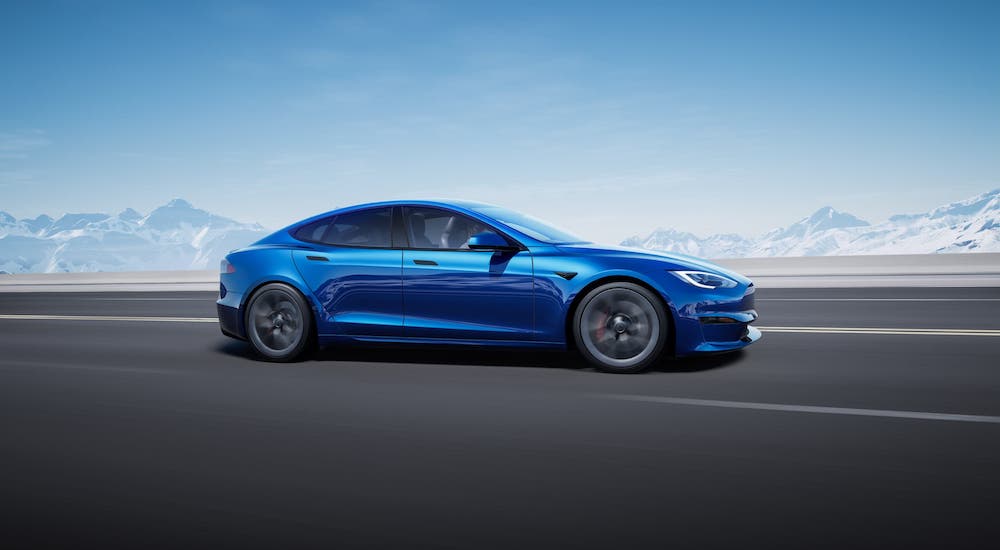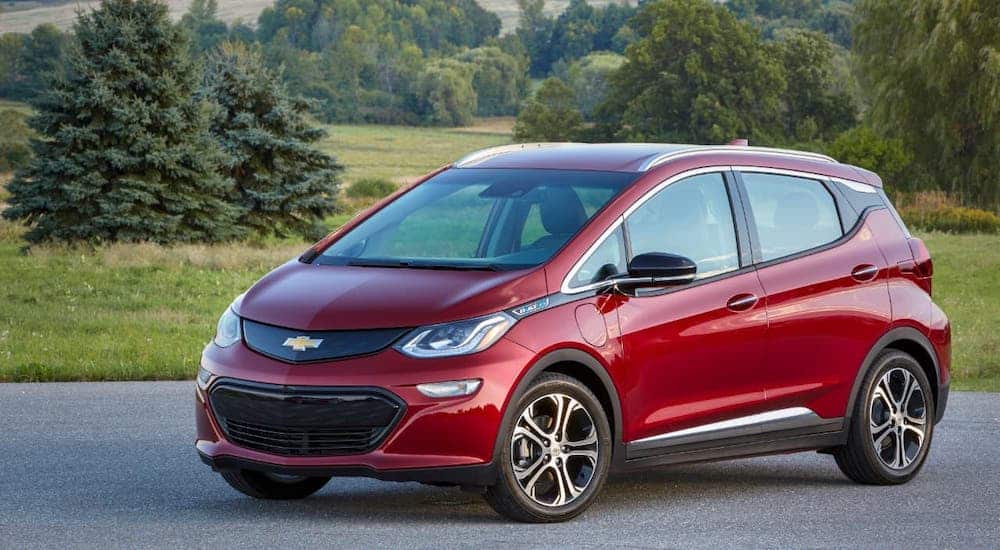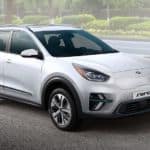From movies like Back to the Future to cartoons like The Jetsons, futuristic cars have long been part of American culture. Most people group electric vehicles into this category because of their recent popularity and impact on the modern automotive industry. But what if we told you that electric cars are not a modern invention? Would you believe it?
Electric vehicles are actually older than gasoline vehicles by half a century, with the first prototypes dating back to the early 1800s when the horse and buggy were the primary means of transportation. However, held back by the primitive battery technology of the day, early electric vehicles were soon surpassed by gasoline cars, and the technology received little attention for many years. Fast forward over two centuries, and the automotive industry has certainly come a long way with electric vehicles like the Tesla Model S and GMC Hummer EV. So, how did we get from early electric cars to current models, and why are electric vehicles so popular these days?
And So It Begins: Early 1800s
At a time when horses and buggies ruled the road, a few inventors couldn’t help but look for a more practical means of transportation and set out to develop exactly that. Between 1828 and 1835, individuals across the world began designing electric motors and putting them into vehicles. However, these designs were far from practical and left much to be desired. While work continued, the horse and buggy remained the most reliable and affordable means of getting from point A to point B.
From Thomas Edison to Henry Ford: 1900s
While no one gave up on the idea of an electric car, it wasn’t until the invention of the lead-acid battery in 1859 that things really took off. By the end of the 1880s, there were functional electric cars on the streets of Europe and America. William Morris of Iowa was responsible for the first American electric car, with a six-passenger design that could hit an impressive (for the time) 14 mph. By the 1900s, electric cars were some of the most popular vehicles on the road in the United States and continued to take on improvements thanks to insights from inventors like Thomas Edison, who set out to design a better battery.
However, this popularity of electric vehicles proved to be short-lived. In 1912, Henry Ford introduced the affordable Model T, which was far cheaper than any electric vehicle. With the advancement of gas-powered engines and the improvement of roads making long-distance travel possible, interest in short-range electric vehicles declined even further. By the 1930s, electric vehicles had all but vanished from the streets, and the gasoline vehicle had become universal.
A Rollercoaster of Interest: 1970s to 1990s
Over the next several decades, electric vehicles were entirely forgotten until gasoline prices soared in the 1970s. The rising prices at the fuel pump sent drivers looking for a cheaper alternative, which generated more interest in electric cars. This interest was helped along in 1971 when NASA’s electric-powered Lunar Rover made history as the first vehicle to drive on the moon.
With interest in electric vehicles rising, automakers like General Motors returned to the drawing board to design new prototypes. However, designs like the 1974 Sebring-Vanguard CitiCar demonstrated the continued limitations of electric vehicles. The CitiCar’s lead-acid battery was little different from the electric vehicles of a century before, and even with its tiny size, the CitiCar had a range of only 40 miles and a top speed of under 40 mph. As gas prices stabilized in the 1980s, electric cars were again forgotten.
But just as fast as their popularity dwindled, electric cars rose to prominence again in the 1990s when new federal and state regulations inspired leading automakers to dedicate more resources to designing electric cars capable of matching the performance of gasoline-powered engines. This period inspired the release of GM’s EV1, which was a huge hit until Toyota took over the market in 1997 with its iconic gasoline-electric hybrid, the Prius.

Don’t Look Back: New Millennium
By compensating for the poor performance of lead-acid batteries with a gasoline engine, Toyota cornered the market on electric vehicles and inspired a new wave of competition as engineers set out to improve the design. By 2006, this innovation made its way to California’s Silicon Valley, where a new startup company named Tesla Motors debuted its luxury electric sports car capable of traveling over 200 miles on a single charge and reaching speeds over 130 mph. The secret behind this incredible leap in performance? New energy-dense lithium-ion batteries that had been developed for laptops and cellphones. Tesla’s success quickly inspired further competition as every manufacturer in the world set out to refine their designs.
The competition led to the 2010 debut of the Chevy Volt, which was the first commercially available plug-in hybrid. Months later, Nissan released the all-electric LEAF that boasted zero emissions. From there, the designs continued to improve, with more manufacturers throwing their hats into the ring. This market saturation and further battery developments quickly reduced the price of electric vehicles, culminating in affordable yet capable models like the Tesla Model 3 and Chevy Bolt EV. This drew an even bigger demographic into the electric car market.
Present Day: Plenty of Options
Today, nearly every automaker offers a hybrid option, if not a fully electric vehicle. Chevrolet’s Bolt EV is one of the most affordable on the market, with a starting MSRP of $36,895. The 2021 Bolt EV boasts a 259-mile range on a fully charged battery and includes a variety of features like the standard 10.2-in touchscreen display with the Chevrolet Infotainment System and the myChevrolet mobile app. The 2021 Tesla Model 3 is a bit more expensive at $37,990 and offers a similar range of 263 miles, but it is the most popular electric vehicle in the world thanks to its even more tech-heavy design and brand image.

The Choice Is Yours
So, why do drivers choose electric vehicles? One of the biggest draws is the lower cost of owning an electric vehicle compared to a gasoline or diesel-powered car, truck, or SUV. These savings begin at the gas station, which electric vehicles can easily bypass since drivers can charge the vehicle from their garage or a nearby charging station. This can translate to hundreds of dollars in fuel savings each year, and the savings don’t stop there!
Since electric vehicles run on electricity, they do not require the same maintenance as gasoline-powered cars. This means that owners enjoy lower maintenance costs since electric vehicles don’t require oil changes, filter changes, new spark plugs, and more. These savings quickly add up and make the electric vehicle a more affordable option despite a generally higher purchase cost.
In addition to the financial benefits, electric cars are also better for the environment. Drivers who are environmentally conscious often choose to drive electric vehicles to reduce their carbon footprints and cut back on greenhouse gas emissions. This, paired with the vehicles’ notoriously quiet operation and instant torque, makes driving an electric vehicle all the more rewarding!
It’s Time to Get Plugged In
Are you ready to get behind the wheel of an affordable electric vehicle like the Chevrolet Bolt EV? or perhaps you have your eye on one of the upcoming electric super trucks like the GMC Hummer EV? Whatever the case, there’s a variety of benefits that come with driving an electric vehicle. From the savings you’ll see in your bank account to the smaller impact you have on the environment, there’s plenty of reasons to consider an electric vehicle. After all, they’ve been around for over a century and have only gotten better with time!



